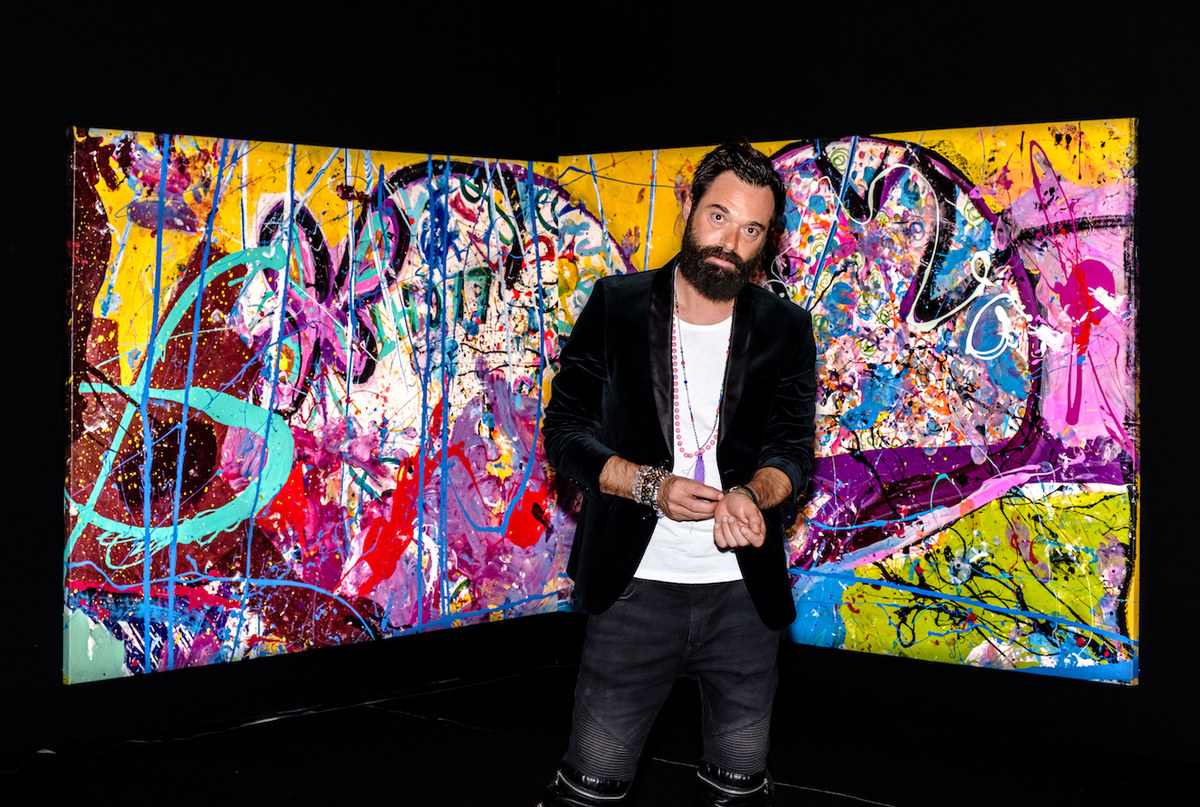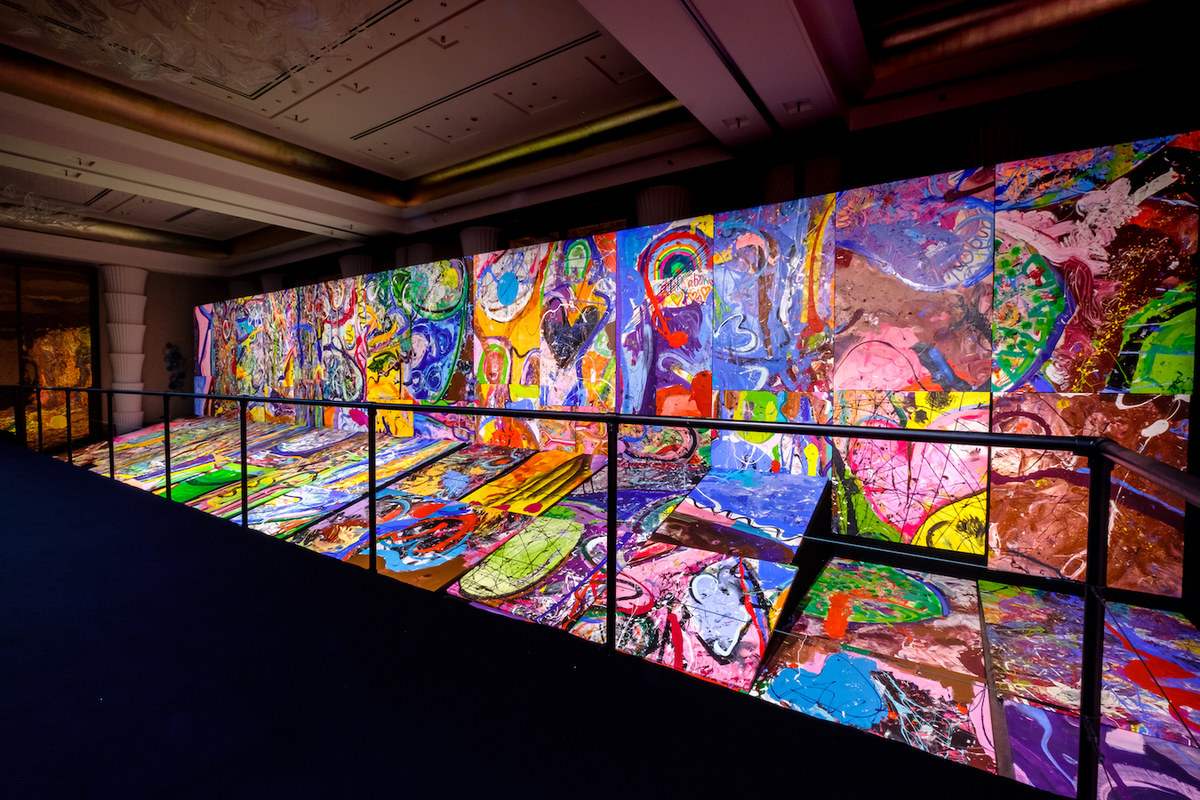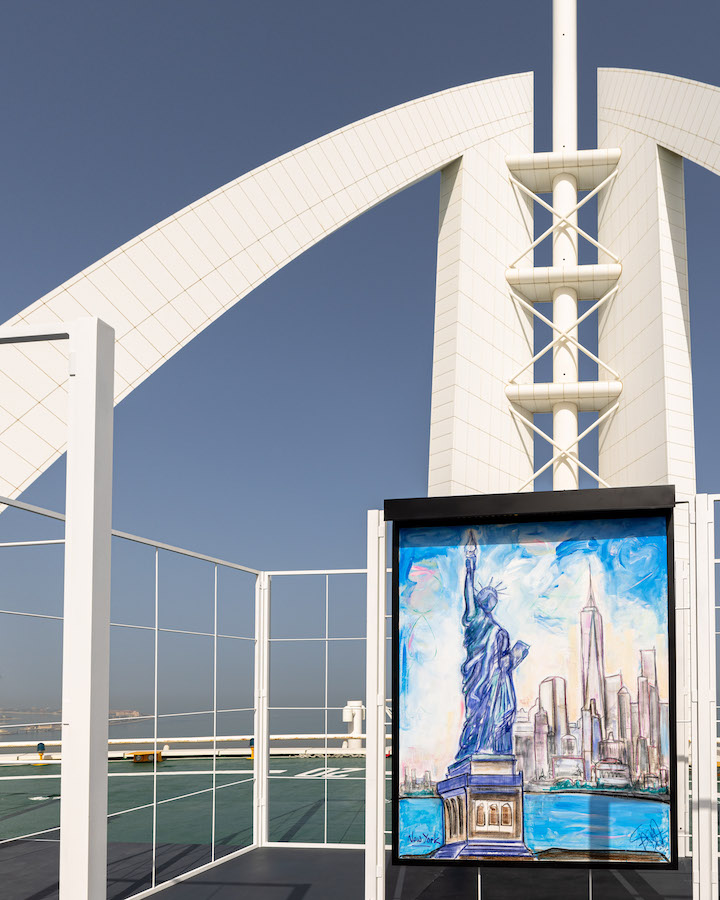Life Style: THE ROUNDUP – Pop-culture highlights from across the region

DUBAI: Sacha Jafri is one of the most famous artists in the world, and not just because of his obvious talent. The 45-year-old has a knack for doing things that have never been done before. Later this year, he is slated to become the first person to have their artwork displayed on the moon. He holds the Guinness World Record for the largest art canvas (the 18,000-square-feet “Journey of Humanity”). And he is, reportedly, the youngest artist to have a 20-year retrospective world tour.
“I’m not trying to do this on purpose,” Jafri tells Arab News. “It’s the other way round. The records are coming to me. It’s quite spiritual, what I do: I tap into something magical, borrow a moment and something beautiful happens. And then someone points out that no one has ever done that before.”
We are talking at the unveiling of Jafri’s latest project, “The Art Maze” — another first (the first art exhibition held in a custom-built steel labyrinth) — on the helipad of Dubai’s Burj Al-Arab hotel, 212 meters above sea level. The work celebrates 50 years of UNESCO World Heritage Sites.
It’s a hot March afternoon and the sun is blazing down. Jafri, who is currently based in Dubai, has been on a grueling six-week schedule, and has spent the last 28 hours painting non-stop. But he is still lively —equally passionate about his art and the causes for which he paints.
“It’s a problem when children don’t learn history; they don’t know where we come from,” he says. “They are increasingly spending time online. As a father of two, I’m worried. This project will raise awareness about our beautiful planet, I feel. And what better way to do it than to paint the UNESCO sites?”
As with most of Jafri’s projects, a part of the proceeds from the sale of the 50 paintings in the Art Maze will be donated to UNESCO. Jafri began associating with humanitarian projects after a trip to Darfur in 2004 with George Clooney, during the filming of the documentary “Sand and Sorrow.” This journey inspired him to visit 42 refugee camps around the world and raise millions of dollars for those camps.

Described as a pioneer of magical realism, Jafri’s collectors include Bill Gates, the UAE royal family, the British royal family, Richard Branson, George Clooney, Will Smith, Madonna, David Beckham, Rafael Nadal and a host of other global celebrities. His work has been shown in most major international arts institutions and has raised more than $140 million for charities across the world through his art. “Journey of Humanity” alone raised a staggering $62 million at auction last year, with proceeds going to several charities and government bodies including Dubai Cares, UNICEF, UNESCO and the Global Gift Foundation.
“We Rise Together with the Light of the Moon,” which will be placed on the lunar surface later this year, also has a strong humanitarian aspect. The funds it will raise are pledged to charities that focus on equality for all, sustainability, education and health.
“If you ask me, we don’t really need an artwork on the moon, but it’s a huge opportunity to raise money for charity,” Jafri says. “Ultimately it’s about reconnecting humanity, connecting with each other, with our creator and to the soul of the earth.”

The heart-shaped artwork depicts two intertwined human figures and will be placed on the moon in association with NASA under the Commercial Lunar Payload Services Initiative (NASA CLPS). The launch will trigger the release of a five-piece NFT (Non-Fungible Tokens) charitable collection and will also see the launch of Jafri’s cryptonaught series. While making his foray into the digital art world, he once again became a world-record holder (the most open-edition NFTs sold in under a minute, with $2 million-worth sold in 45 seconds).
But even as he embraces technology in his work, Jafri is quick to warn of its pitfalls.
“Our future is human,” he says. “Technology can be used to aid humanity, but it should not take over.”

Jafri has become one of the art world’s most-bankable investments. And, as he explains, there are probably few artists who have immersed themselves so deeply in their work. He has been proven to go into a trance-like state when he paints, and when he was struggling academically as a child with severe dyslexia, art was, he says, the “only thing that made sense” — something the teachers at the UK’s most-prestigious public school, Eton (which he attended at the same time as Prince William), fortunately recognized, providing Jafri with his own portacabin studio. “That changed my life,” he says.
Brain scans have shown that Jafri enters a theta state when he is painting — meaning he is extremely relaxed and that tasks become almost automatic. Being so involved in his work means that he often does not eat or sleep for days when working. While creating “Journey of Humanity,” he would often work in 17-hour stretches and not sleep for four days. (He ended up with herniated discs in his spine and dislocated ankles.) And, as mentioned, before “The Art Maze” was unveiled he painted continually for 28 hours.

“For an artist, it’s not the finished product or the journey that matters, but the way they live their life. If you do not live in grace, then even if you create something beautiful, it has no meaning or poignancy,” he says. “It’s the intention with which you create that stays.
“The whole point of art, is that it is the soul of a human being who has surrendered and connected to something greater than himself. As soon as we engage the ego and become self-important, the magic ends. That’s why I can say I love what I do — because it’s not me. I just feel humbled to have been part of the process,” he continues.
“Art is really two (things): Love and empathy,” he concludes. “When these two combine, that is when something happens that changes the world.”
Noting that the news was copied from another site and all rights reserved to the original source.
xnxx,
xvideos,
porn,
porn,
xnxx,
Phim sex,
mp3 download,
sex 4K,
Straka Pga,
gay teen porn,
Hentai haven,
free Hentai,
xnxx,
xvideos,
porn,
porn,
xnxx,
Phim sex,
mp3 download,
sex 4K,
Straka Pga,
gay teen porn,
Hentai haven,
free Hentai,




